The fundamental problem is that ships are large objects and have distinctive shapes, which reveal much about their intended function. And as a ship moves, it stands out from the ocean, thus creating a visual attraction to it.
"In such cases, three tactics may be of use: concealment, camouflage, and deception. The simplest is concealment; one cannot interpret images of objects that cannot be seen from afar. However, the concealment tactic really only works well for smaller objects. For larger objects, the use of camouflage is called for, a tactic of adjusting the appearance of the object in ways that make application of the elements of image interpretation difficult. For example, if an object has a distinctive shape, then camouflage would not hide the object outright, but would alter its outline so as to remove its 'distinctiveness.' Some objects are too large/unusual even for camouflage to work; for them the best tactic might be to create multiple objects that present a similar appearance to the interpreter."1
In the above context, naval camouflage is not designed to completely hide a vessel, but is intended to "make applications of the elements of image interpretation difficult."1 Thus it creates confusion as to course, speed, target angle, weapons, and other features. Creating this confusion was especially important before the wide spread use of radar. However, ships are still observed and measures are taken to make them less visible to the human eye.
Note: In the U.S. Navy, a camouflage scheme is called a measure and each one has a measure number and a pattern number if required.
Naval camouflage falls into three broad categories:
- Deceptive
Deceptive camouflage techniques are designed to create confusion as to course, speed and features. An example of a deceptive schema is a false bow wave to give the impression of high speed at all times or measures to make one type of ship look like another.
- Disruptive
This category of camouflage is designed to break up or alter the silhouette of a vessel. The patterns and tones are designed to resolve at distance to an average low reflectivity. Disruptive schemas obscure details and thus create confusion as the identity of the vessel as well as confusion as to target angle, range and course. Dazzle and splinter schemas are examples of disruptive camouflage. USN disruptive measures also counter-shaded the undersides of horizontal surfaces in pale gray or white to reduce self-shadowing.
- Concealment
Concealment camouflage is designed to conceal the ship from observation. Vertical surfaces are painted to harmonize with the horizon and horizontal surfaces to blend with the sea. Virtually all modern warships are painted in some form of a concealment schema.
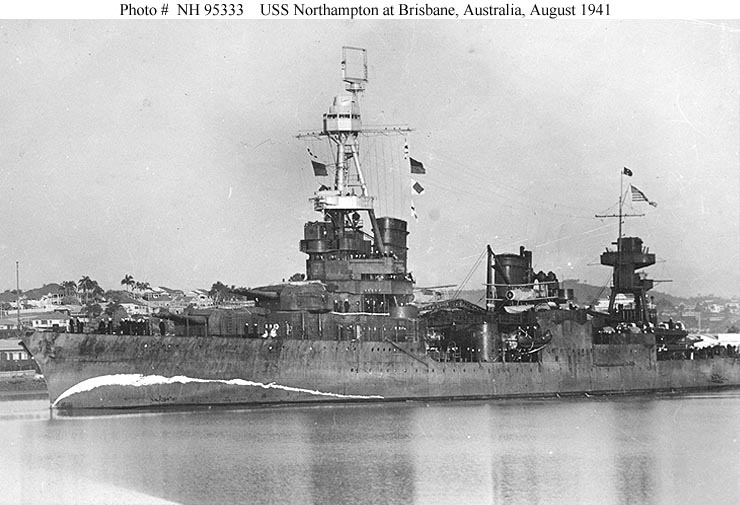
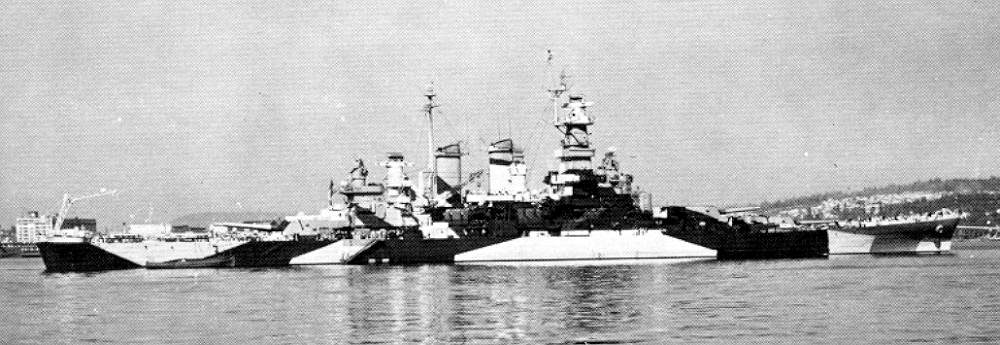
In Figure 1, U.S.S. Northampton is painted in a concealment pattern called Measure 1. Measure 1 consisted of dark gray from waterline to funnel top and light gray above. The light gray masts would blend with the sea/sky as the ship came over the horizon. Note the addition of a Measure 5 false bow wave, a deceptive pattern, to cause confusion regarding her speed.
Figure 2 shows U.S.S. North Carolina in Measure 1. The photo is a little too blue, but it gives a good idea of the colors and their application.
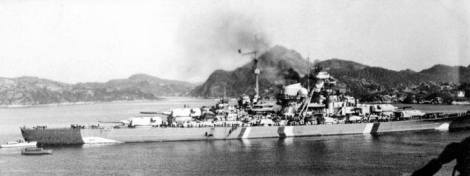
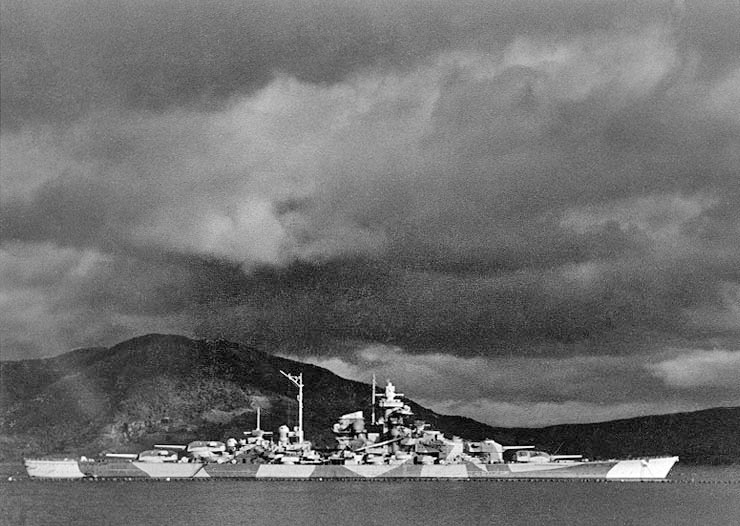
In Figure 3, K.M.S. Bismarck shows elements of both a deceptive and a disruptive schema. He has both a false bow wave and wake with a darker stern and bow in a deceptive scheme, which tries to confuse the observer to speed and ship size. Kriegsmarine battleships and heavy cruisers all had a similar silhouette so this schema may have been effective. The black and white stripes on the hull carry onto the superstructure. The stripes are a disruptive measure, which is designed to complicate determination of his course and speed. The two schemas work together to complicate determination of target angle.
In Figure 4, KMS Tirpitz also shows elements of a disruptive and a deceptive schema. He has both the stern and bow a painted in a lighter shade so as to deceive the observer as to ship length and target angle. The dazzle camouflage obscures ship details and breaks up his silhouette.

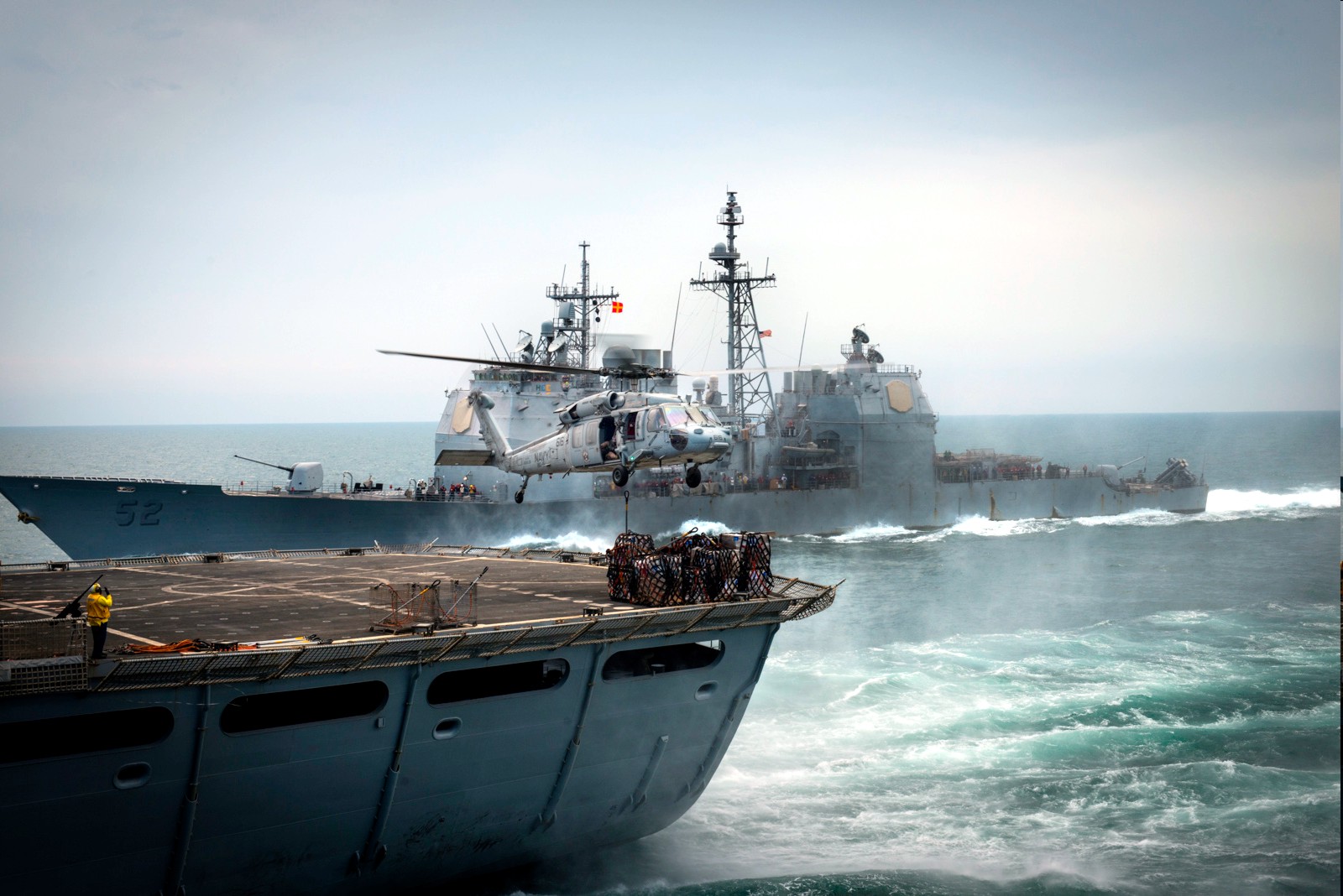
In Figure 5, U.S.S. North Carolina is shown in a Measure 32, Pattern 18d disruptive camouflage schema. Note how hard it is to pick out features. Her five-inch secondary battery is almost completely obscured.
Current U.S. Navy practice is to paint their ships in a concealment schema called Measure 13. Measure 13 provides
"low visibility to surface observers in hazy or foggy weather especially when it is accompanied with periods of weak sunlight...useful in submarine infested areas, where periscope observers will see a vessel entirely against a sky background. High visibility under search light, and down moon at close ranges. Very low visibility on moonless nights and at twilight. This was found to provide reasonable protection in the widest range of conditions"2and assumes radar observation. Measure 13 originally called for haze gray on all vertical surfaces and deck blue for all horizontal surfaces. After World War II, deck gray was substituted for deck blue.
In Figure 6, U.S.S. Bunker Hill is shown in her Measure 13, concealment schema. Note the counter-shading of her hull number to reduce contrast as a passive defense measure against infrared detectors and guidance systems.
- ^Bureau of Ships Manual Ship Camouflage Instructions (Ships-2) Revision 2, June 1942.
Paul Killins is a former U.S. Navy Surface Warfare Officer who received his commission through the NROTC Unit of Southern University/Louisiana State University in 1979. He graduated with a BS in Engineering Design and Technology, and after Surface Warfare Officer School (Basic), he reported to U.S.S. Truxtun (CGN-35). While serving in Truxtun, he qualified as a Surface Warfare Officer and was the Electronic Warfare Officer, Gunnery Officer and Battery Control Officer. After his sea tour on Truxtun, Paul served on the Staff of the Commander, Naval Surface Forces Pacific.
After leaving the Navy, Paul joined General Dynamics Convair Division as a Systems Engineer working on the Tomahawk Cruise Missile Program for all of the Navy’s surface and submarine launch platforms as well as USAF’s Ground Launched Cruise Missile Program. Paul is currently an Information Technology Principal Manager for Southern California Edison.
Paul has always been into the details of military history, weapons design, and operations with a focus on World War II. He is a crew member of the Pacific Battleship Museum (the former U.S.S. Iowa), located in San Pedro, CA.
- 16 July 2016
- New article.
